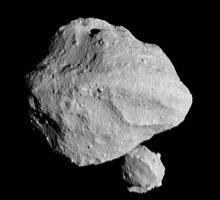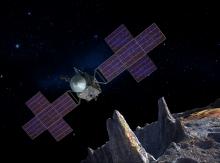Listen to today's episode of StarDate on the web the same day it airs in high-quality streaming audio without any extra ads or announcements. Choose a $8 one-month pass, or listen every day for a year for just $30.
You are here
Cometary Water
Water covers more than two-thirds of Earth’s surface. And scientists are still debating where it came from. A study earlier this year might help clarify things — at least until the next study comes along.
Earth probably wasn’t born with a lot of water. Conditions were so hot that water was vaporized. And lightweight elements like hydrogen — one of the components of H2O — were blown away from the inner solar system. That didn’t leave a lot of raw material for filling Earth’s oceans.
For a while, the leading idea said the water was deposited well after Earth was born — by icy comets. When astronomers looked at the chemistry of comets, though, they found that cometary water didn’t match the water on Earth.
So that led to a new idea: That Earth’s water came from asteroids. Although they’re made mainly of rock, these giant boulders contain a lot of water. And its composition is a better match for Earth’s water. So asteroid impacts became the new favorites.
But a few months ago, a new study found that comets might be a good source after all. Astronomers looked at a comet that releases a lot of water and gases into space. Its water was a close match to Earth’s. That suggests that most comets hold onto their Earth-like water. They spew water into space only from their surfaces, where the chemistry is different. But when one of them hits Earth, it spatters water from the inside — water that’s a lot like the stuff that fills our planet’s oceans.
Script by Damond Benningfield





